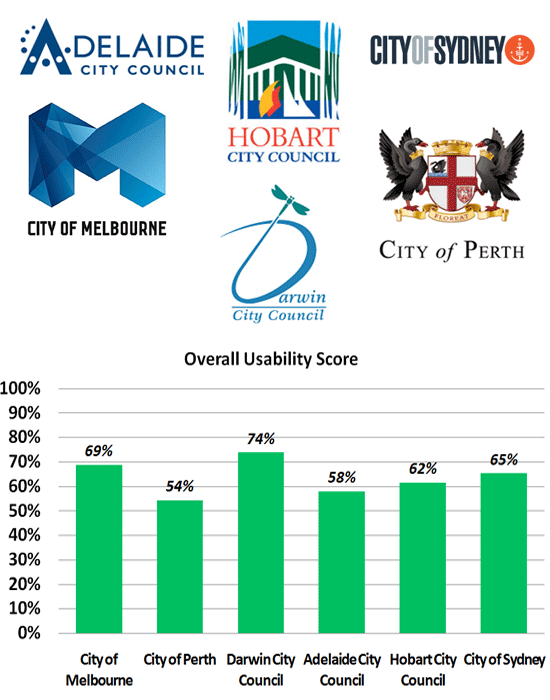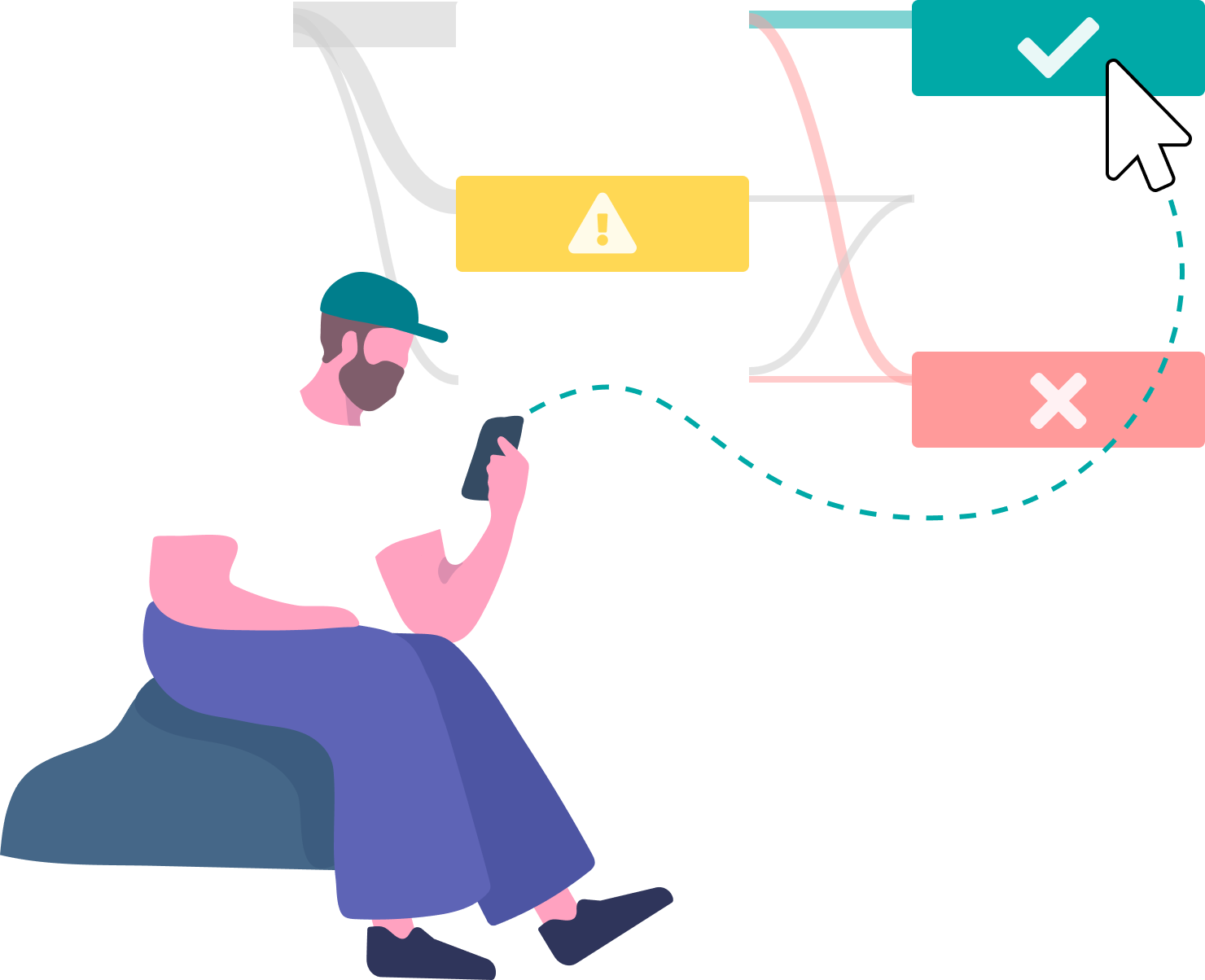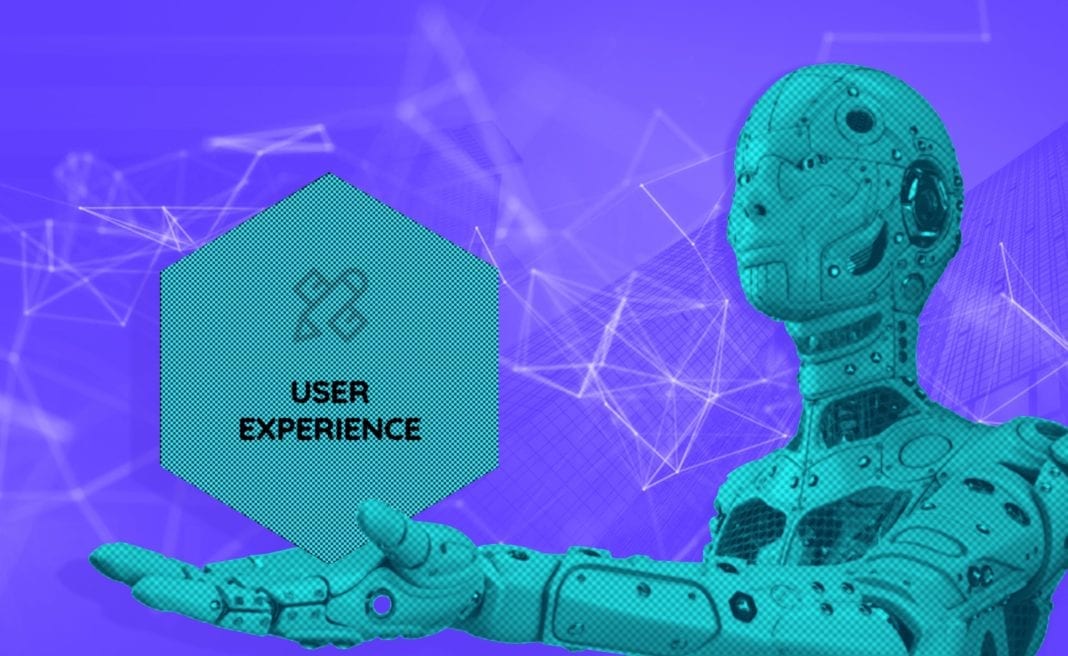
Which City Council has the best website?
We took six of Australia’s capital city councils and tested the usability of their websites. You'll be surprised by which council came out on top.
Understand user behavior on your website.
Test usability on mobile devices and tablets.
Conduct live, guided user testing sessions.
Design or refine your information architecture.
Allow users to test without assistance.
Understand visitors’ goals and satisfaction.
Determine which design performs better.
Analyze your website against competitors.
Optimize design before development.
Measure ease of finding your online properties.
Gain deeper insights using the power of AI.
Track users’ clicks and navigation patterns.
Visualize user engagement and interaction.
Capture user interactions for usability analysis.
Get access to all Loop11 features for free. Start free trial
Understand user behavior on your website.
Test usability on mobile devices and tablets.
Conduct live, guided user testing sessions.
Design or refine your information architecture.
Allow users to test without assistance.
Understand visitors’ goals and satisfaction.
Determine which design performs better.
Analyze your website against competitors.
Optimize design before development.
Measure ease of finding your online properties.
Gain deeper insights using the power of AI.
Track users’ clicks and navigation patterns.
Visualize user engagement and interaction.
Capture user interactions for usability analysis.

Visualize user paths effortlessly for efficient insights.

Combine with heatmaps for in-depth user understanding.

Boost conversions through improved user journey.

At Loop11, we are committed to providing you with the tools you need to understand and enhance user interactions on your website. Our clickstream analytics empowers you to capture user pathways and insights that lead to a successful website experience.

The Clickstream Report offers a visual representation of participants’ journeys through your website. It provides a window into user navigation, helping you understand their paths and page flows, whether they successfully complete their tasks or decide to abandon them.

Loop11’s clickstream analytics allows you to follow participants as they progress through usability tasks on your website. You can switch between different task clickstreams, gaining a comprehensive view of user interactions, highlighting the route to success, and identifying areas for improvement.

To enhance your understanding further, Loop11 seamlessly integrates click heatmaps into clickstreams. These heatmaps pinpoint the hotspots on your webpages, indicating the areas where users engage most. Click heatmaps identify the elements that matter most to your users, all within the context of their journey.

Explore your website’s digital landscape, unlock user insights, and fine-tune user pathways for maximum conversions.
Clickstream analytics is a powerful tool that provides in-depth insights into user engagement with your website. By tracking user interactions, it uncovers information that can transform the way you connect with your audience. Let’s explore the key advantages of clickstream analytics:

Clickstream data reveals the digital paths users take. You can see their starting point, the detours, and where their journey ends. It’s a powerful way to discern true intent and identify engaging content.

Ever wondered why a user abandoned their shopping cart? Clickstream data unveils the stumbling blocks. By pinpointing these drop-off points, businesses can streamline pathways, reduce friction, and enhance conversion rates.


In today’s age of personalized experiences, generic approaches fall short. With clickstream analysis, businesses can offer customized content and recommendations at key moments, making users feel recognized and understood, thus boosting engagement and loyalty.

Not all website elements are equally important. By understanding which pages or features are used most, businesses can prioritize updates and improvements where they matter most, ensuring optimal resource allocation.

Consistent analysis of clickstream data reveals behavior patterns that can predict future user behavior. This allows proactive improvements and ensures users consistently enjoy the best possible experience.


“What we’re really doing with Loop11 is validating our designs. We might have a particular journey, like a user upgrading their mobile phone, and we want to redesign that. We test our approach on users, and we then have a series of assumptions that are either refuted or proven to be true.”


“Loop11 has been a wonderful asset for us. We can see real world kids and real world parents in real world environments, and how the app performs. And we can make adjustments based off of that.”


“Using Loop11 allows us to deliver quantitative data so the client can see where the painpoints of their users are and where to tackle the usability issues in their platform.”

Explore our features that allow you to easily manage your testing projects and obtain valuable feedback from your users.
In the fast-paced digital landscape, capturing user attention and outshining competitors is vital to optimizing website performance. One of the most potent tools at a business’s disposal? Clickstream data.
Clickstream data is the digital trail users leave as they navigate websites and apps, capturing every interaction, click, and pause. Genuine clickstream data is rare, not just due to cost but also the challenge of turning raw data into actionable insights. Only select platforms offer this valuable resource.
Understanding user behavior to increase conversion rates is a game-changer; however when utilized well, clickstream data isn’t just about understanding users – it’s a strategic lens into your competitors’ world. It’s your secret weapon in online competition, offering invaluable insights to outperform the competition in the digital arena.
In a world driven by digital experiences, understanding the intricate maze of user behaviors offers businesses a competitive edge. Central to gaining this insight? Clickstream data.
Here are 5 valuable insights it uncovers:
Digital touchpoints have become the cornerstones of modern business in a world constantly evolving with technology. From how we shop to how we communicate, they've reshaped industries and redefined the essence of interaction.
Consider Amazon's "1-Click" ordering system. What was once a lengthy checkout process has been distilled into a singular, seamless touch. It's not just convenient; it's transformative, increasing conversion rates by minimizing barriers to purchase.
Or take Spotify's algorithm-driven song recommendations. A personal touchpoint tailored to individual preferences, it crafts an experience so unique that users feel an emotional connection despite interacting with an algorithm. It's an intimate bond fostered through a digital medium.
Business meetings? They've leaped off the boardroom table onto screens, with platforms like Zoom and Microsoft Teams making global interactions feel local. A client in Tokyo and a designer in New York can now brainstorm in real time, bridging the physical gap with digital ease.
Digital touchpoints are more than just tools. They're encounters, experiences, and emotions. As businesses harness their power, they're not just changing operations but reimagining possibilities, turning everyday interactions into extraordinary engagements.
Each user's journey on your website is filled with choices, pauses, and redirections. This intricate dance of clicks, hovers, and scrolls might seem arbitrary, but each step tells a story. And within these stories lies the key to website optimization. Why does it matter?
With clickstream data, you're handed a magnifying glass to observe your users' every move. Over time, patterns emerge. A specific blog is getting views and leading users to check out your product page. Such trends become your guide, helping you double down on what works and rethink what doesn’t.
For instance, if a subtle CTA at the bottom of your page like "Reach out" isn't garnering clicks, it might be time for a copy revamp. Is the wording off? Or, lost in a sea of content? The answers lie in the clickstream.
For e-commerce platforms, the cart isn't just a tool; it's a commitment. So when potential customers load it up but leave before checking out, there's a mystery. Do you need to load your site faster? Are forced account creations causing friction? With clickstream data, you pinpoint the exact hiccup and address it head-on.
Imagine your website as a bustling city. There are numerous routes, but not all lead to the desired destination. Clickstream data paints a picture of these varied pathways. If users seem lost, hopping from one page to another with mere seconds of engagement, it's a sign. Your website’s navigation might need simplifying, or clearer CTAs can pave a more straightforward route.
Understanding your competitors is as vital as knowing your own turf in the digital race. You can gain a sneak peek into your competitors' user behaviors by leveraging external clickstream data. It's akin to having a map of their terrain, informing your strategies, and ensuring you're always a step ahead.
Understanding a user's path isn't just about tracking; it's about empathizing, adapting, and evolving. Every click is a whisper, a preference, a desire. Always keep that in mind!
True user intent studies can be applied in various scenarios, including:
Understanding user motivations: A true user intent study can help you better understand why users visit your site. By asking entry questions such as "Why did you come to the website today?" or "What are you looking to achieve?", you can uncover the motivations and goals of your users.
Evaluating task success: With a user intent study, you can assess whether visitors can successfully accomplish their desired tasks on your site. By asking exit questions like "Was your visit successful?" or "Were you able to find what you were looking for?", you can gather insights into the usability and effectiveness of your website in fulfilling user needs.
Prioritizing improvements: A user intent study can provide valuable input for prioritizing website improvements. By analyzing the collected data and identifying common issues or roadblocks users face, you can determine the most critical areas that need attention. For example, if many users struggle to find specific information, you can prioritize optimizing the site's search functionality or improving the information architecture.
Validating design changes: If you plan to make significant design changes to your website, conducting a user intent study beforehand can help validate those changes. By gathering user feedback on their expectations and perceptions of the existing design, you can assess the potential impact of the proposed changes. This can prevent unnecessary redesigns that may not align with user preferences.
Optimizing conversion funnels: A user intent study can also be beneficial for optimizing conversion funnels on your website. By understanding the motivations and intentions of users at different stages of the funnel, you can identify areas where users may be dropping off or encountering difficulties. This insight allows you to refine the user journey, address friction points, and improve the conversion rate.
Website design sometimes feels like a puzzle; missing pieces can turn potential customers away. Thankfully, clickstream analytics is here to show us where those gaps are. Let's break down how it works step by step:
Step 1: Understand Clickstream Data
Clickstream analytics records all user actions (like clicks, scrolls, and more) on your site. Think of it as tracking the footsteps of visitors on your digital property.
Step 2: Analyze User Paths
Review the pathways users take. Are they breezing through, or do some pages make them hit a wall? If they're stalling on a page or bouncing quickly, that's your cue something might be amiss.
Step 3: Identify Problem Areas
Let’s say most visitors abandon the cart at the payment page. This could be a red flag! With clickstream data, you can see if a particular button isn’t working or if a confusing design element throws users off.
Step 4: Implement Fixes
Once you’ve identified design flaws, it's time to rectify them. Maybe you need clearer navigation, a more prominent CTA, or a simple button fix.
Step 5: Re-evaluate with Fresh Data
After making changes, return to your clickstream analytics to assess the impact. If user behavior improves, you're on the right track. If not, it's back to the drawing board.
Remember, with clickstream analytics by your side, refining your website is less about guesswork and more about informed decisions. It's like having a navigation system for the sometimes-winding roads of web design!
In a competitive marketplace, understanding user behavior is key to driving more effective and targeted marketing campaigns. Sending generic messages to a broad audience is an outdated approach. Instead, businesses can harness the power of clickstream analytics to tailor their marketing strategies with precision.
Clickstream analytics allow marketers to delve into how users interact with online content, what they search for, and the patterns of their site visits. By understanding user behavior, businesses can segment their audience based on preferences and behaviors, moving away from relying solely on broad demographics.
For instance, if data indicates that users frequently browse sports shoes without making a purchase, a targeted campaign offering discounts or highlighting product benefits can be directed at them. This personalized approach increases the likelihood of conversions as messages are tailored to address specific user preferences.
Moreover, understanding user behavior isn't just about increasing sales; it's about building lasting relationships. When users feel understood, they are more likely to trust and engage with a brand.
In summary, by harnessing insights on user behavior through clickstream analytics, marketers can create more targeted and effective marketing campaigns, curating experiences that foster brand loyalty and drive long-term growth.
Picture this: Every time a user clicks, scrolls, or hovers over your website, they're dropping breadcrumbs. These tiny digital trails, when collected, form the rich dataset we call clickstream analytics. Now, imagine using these breadcrumbs to predict what's around the corner.
Every interaction on your website, from clicks to scrolls, leaves behind a digital trail. This is more than just data; it's a gold mine for making predictions!
With clickstream analytics, you can:
Follow Digital Breadcrumbs: Every click or hover paints a part of the user's journey.
Example: If you observe that visitors consistently browse a product page but abandon it before making a purchase, it’s a clear signal. Maybe the pricing isn’t right, or they're looking for more product details. By identifying this, you can tailor your approach by offering targeted discounts or adding detailed product videos.
Spot Patterns: Over time, as data accumulates, recurring behaviors and trends emerge. These aren't mere coincidences; they're patterns waiting to be discovered.
Example: Every October, like clockwork, there's a spike in interest in winter wear. This isn't just about the change in weather; it's a straightforward consumer behavior pattern that you can capitalize on with timely promotions and stock management.
Do Predictive Modeling: Historical data isn't just for reflection—it's the foundation for making future predictions. By learning from the past, you can anticipate what's on the horizon.
Example: Do you see a decrease in user sign-ups every summer? Instead of dreading the summer slump, introduce a new feature or a summer loyalty program to reignite user interest.
Stay Proactive: With insights in hand, you transition from a reactive stance to a proactive one, always staying ahead of the curve.
Example: If you forecast a surge in website traffic during Black Friday sales, you can bolster your backend infrastructure or plan engaging pop-up campaigns to capitalize on the traffic, ensuring smooth user experiences and maximizing conversions.
You're not just passively observing user behavior by weaving together these insights from clickstream analytics. You're actively shaping the future of your digital strategy.
Clickstream data offers a treasure trove of insights, revealing the nuances of user behavior. But with great power comes great responsibility. Ethical and responsible use should be at the forefront for businesses eager to tap into this resource.
Ready to delve into the world of clickstream data without tripping over ethical hurdles? Here's a quick guide to help you:
Transparency is Key:
Offer Control with Opt-In/Opt-Out Choices:
Anonymize Data:
Set a Data Expiry Date:
Get Regular Updates:
Use Insights Wisely:
By embracing these principles, you're all set to explore the benefits of clickstream data while maintaining a strong ethical compass.

We took six of Australia’s capital city councils and tested the usability of their websites. You'll be surprised by which council came out on top.

We are thrilled to announce a major update to Loop11 - the AI Summaries feature. This new product update will revolutionize the way UX researchers analyze user research data, making their work faster, more efficient, and more insightful. This feature is a game-changer for UX research and we are proud to be the first UX platform to offer it. We encourage you to try it out and see the difference it makes in your work.

In the field of User Experience (UX) design, understanding the principles of visual hierarchy is incredibly important. By carefully arranging elements, colors, and content, visual hierarchy acts as a guiding tool, making it easier for users to navigate and accurately gather information. This blog takes a deep dive into the concepts that lead to effective […]
Harness the power of clickstream analytics to delve into user behavior and enhance your online strategy. Discover the pathway to user engagement and loyalty.

We love sharing interesting UX topics and work by creatives out there. Follow us for weekly UX posts, inspirations and reels!